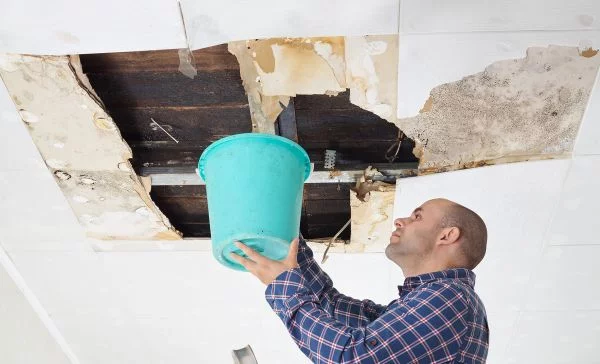Water leaks in a house can occur due to various factors such as the age of the house, natural disasters, or construction flaws. Roofs, exterior walls, and windows are especially prone to leaks. Here are some targeted waterproofing methods for you to consider.

Common Sources of Water Leaks
1. Water Leaks from Rain
Rain can penetrate your house through several weak points, leading to water leaks from the ceiling, walls, or foundation. Common entry points include damaged roofs, poor window seals, and cracks in exterior walls.
2. House Leaking Water from Ceiling
Water leaking from the ceiling is often a sign of roof damage. This could be due to aging waterproof layers, structural damage from storms, or blocked gutters that cause water to pool and seep through the roof.
3. Leak in Water Line to House
Leaks in the main water line to your house can lead to significant water loss and potential foundation damage. These leaks are usually detected by a sudden drop in water pressure or unexplained increases in your water bill.
4. Water Leak in My House
Leaks within the house can occur in various places, including under sinks, behind appliances, or within walls. These leaks are often due to faulty plumbing, burst pipes, or deteriorating fixtures.
5. Water Leaking Under House Foundation
Water leaking under the house foundation can weaken the structure and lead to serious issues like foundation shifting or cracks. This can be caused by poor drainage, broken pipes, or excessive rainwater.
6. Roof Leaking into House
A leaking roof can result from missing shingles, damaged flashing, or clogged gutters. It’s crucial to address roof leaks immediately to prevent further damage to the interior of your home.
7. Water Leak Outside House
Leaks outside the house, such as in garden hoses, outdoor faucets, or irrigation systems, can waste water and lead to higher utility bills. These leaks can also cause erosion and damage to your landscaping.
Detecting Water Leaks
Pooling Water
After a rainstorm, check for pooling water on your roof, in your yard, or around your foundation. Standing water is a clear indicator of poor drainage or leaks.
Water Stains and Peeling Paint
Look for water stains on ceilings and walls, peeling paint, or wallpaper. These signs often indicate water intrusion from leaks in the roof, windows, or plumbing.
Mold and Mildew
The presence of mold or mildew, particularly in basements, bathrooms, or under sinks, can indicate ongoing water leaks.
Unexplained Water Bills
A sudden increase in your water bill without a corresponding increase in usage often signals a hidden leak.
Solutions for Water Leaks
Roof Waterproofing
Surface Preparation: Clean the roof, fill cracks, and remove debris.
Repair Pooled Water Areas: Level out any pits to prevent water accumulation.
Apply Waterproof Coating: Use a high-quality, exposed water-based waterproof coating and a polyester fabric waterproof layer for enhanced flexibility and durability.
Exterior Wall Waterproofing
Concrete Walls: Drill holes and inject waterproofing agents from the indoor side.
Brick Walls: Chisel open to the structural layer, apply a waterproof layer, and finish with cement rendering.
Window Waterproofing
Inspect and Seal: Check for old or detached silicone sealant and replace it. Ensure proper sealing around window frames and any structural gaps.
Inject High-Pressure Foam: For severe leaks, drill holes and inject waterproof foam to seal gaps effectively.
Foundation Waterproofing
Improve Drainage: Ensure proper grading around your home to direct water away from the foundation.
Install French Drains: These can help channel water away from the foundation.
Seal Cracks: Use hydraulic cement or epoxy injections to seal cracks in the foundation.
Conclusion
Waterproofing your home is essential to prevent water damage and maintain its structural integrity. Regular inspections, timely maintenance, and using high-quality waterproofing materials are key to protecting your home from water leaks. By addressing issues promptly, you can ensure your home remains dry, safe, and comfortable.




